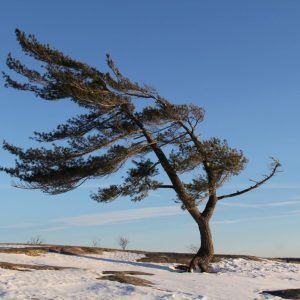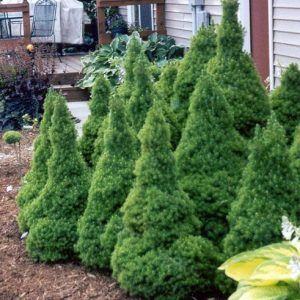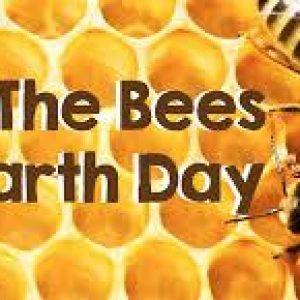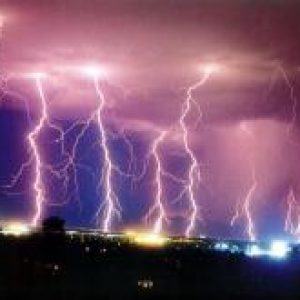For our second installment on tree problems in the Edmonton area, this post will be examining the Armillaria root disease — also known as Armillaria root rot or shoestring root rot. The disease affects many woody angiosperms (hardwoods) and gymnosperms (conifers) in many of Alberta’s native forests, planted forests, orchards, and in amenity plantings in urban areas. Because multiple species within the genus Armillaria are responsible for the proliferation of the disease, it has an extremely broad host range — in fact, hundreds of trees and shrubs are susceptible to root rot to varying degrees. The only two genera of tree known to be resistant to Armillaria root rot are larch and birch — good news to Edmonton-area homeowners, as these two tree species are commonly selected for urban planting.

Armillaria root rot is a fungal root rot whose symptoms vary greatly, but common negative conditions range from stunted leaves among deciduous tree species to chlorotic needles among coniferous species, and dieback of twigs and branches among trees of all types. All infected trees display symptoms common to white, rotting fungi which can cause a number of negative side effects which include a lightening or bleaching of the wood as a result of the degradation of essential cell wall compounds. This bleaching will accelerate as lignin and hemicellulose compounds within the tree’s physiological structure break down.
If you suspect that a tree in your yard is infected, there are several signs of Armillaria root disease that may be seen in the field. If you spot any of these signs, it is highly recommended that you seek out a tree care specialist to help you deal with the infected tree immediately.
One of the easiest ways to spot shoestring root rot is to look for symptoms in the tree’s crown, such as branch dieback and a general thinning of branch and foliage in the crown. On some conifers, yellowing or reddening of foliage or heavier-than-normal production of cones may also develop. If you spot any of these symptoms, it is wise to contact an arborist right away.
On some species, symptoms are more visible at the base of the tree — usually the hard-to-miss white fungus is the first and most obvious sign of infection. The fungus may grow up from the roots in the inner bark and cause basal cankers above the infected roots, while conifers might show signs of resin exudation, or resinosis. When resinosis occurs, decayed roots may be apparent or decay in the inner wood of the stem base may be exposed. Deciduous trees occasionally develop deep, sunken cankers, but often times this is difficult to identify. In all of the above cases, don’t hesitate to contact a tree care professional here at Chipps to help you diagnose and solve the problem quickly.
Acting quickly is of paramount importance, as Armillaria root rot often sets in quickly; it is common to see the disease affecting trees already stressed by one or more other negative factors. In fact, the root rot is sometimes primary, attacking healthy hosts, and in other cases it is secondary, attacking stressed hosts. This double whammy will spell trouble for your trees and yard if you fail to act quickly.
The good news is that Armillaria root disease is usually easy to diagnose conclusively if one can cut into the tree roots or base. A Pulaski is a good tool for diagnosis of root diseases of trees, because it has a digging/scraping side and a chopping side. Of course, most of us don’t have arboreal tools just sitting in the shed, nor the knowledge necessary to properly use them. This is why it is integral to spot the symptoms early and then to contact an expert at Chipps Tree Care immediately. Our experts are familiar with this disease and the most effective ways of managing it — even in Edmonton’s densest urban areas. Our strategies include limiting the spread of the fungus, planting resistant species, and removing infected material. Our tree removal team will remove the infected roots from the soil to help prevent future infections. Whether the solution requires a trimming or scraping away of the disease to restore your tree’s health, or a full trunk and stump removal is necessary, our experts can help you deal with this common ailment. Remember that most tree diseases are easy to spot, and, if reported early, just as easy to remove. Contact our experts if you suspect your tree is infested by this or any other nasty disease.
























